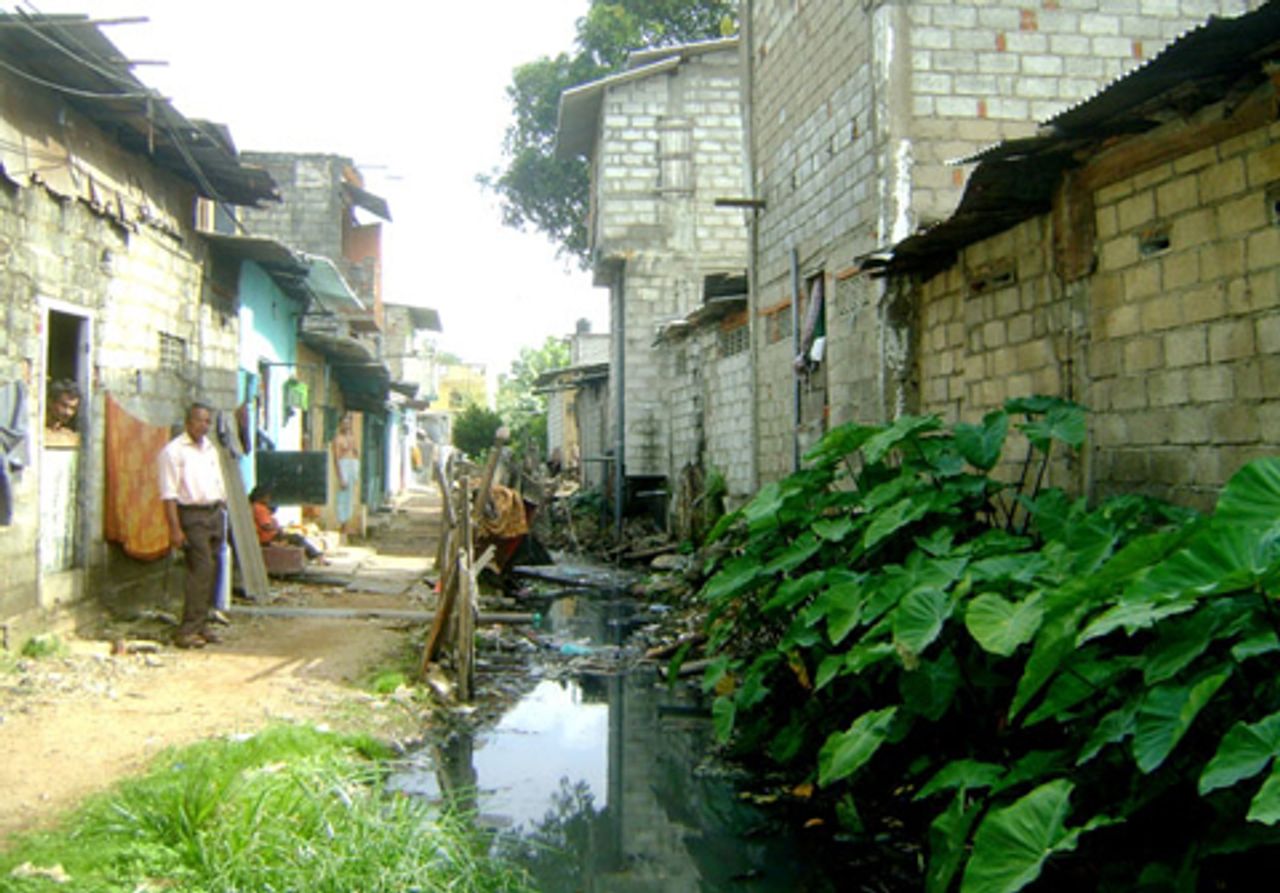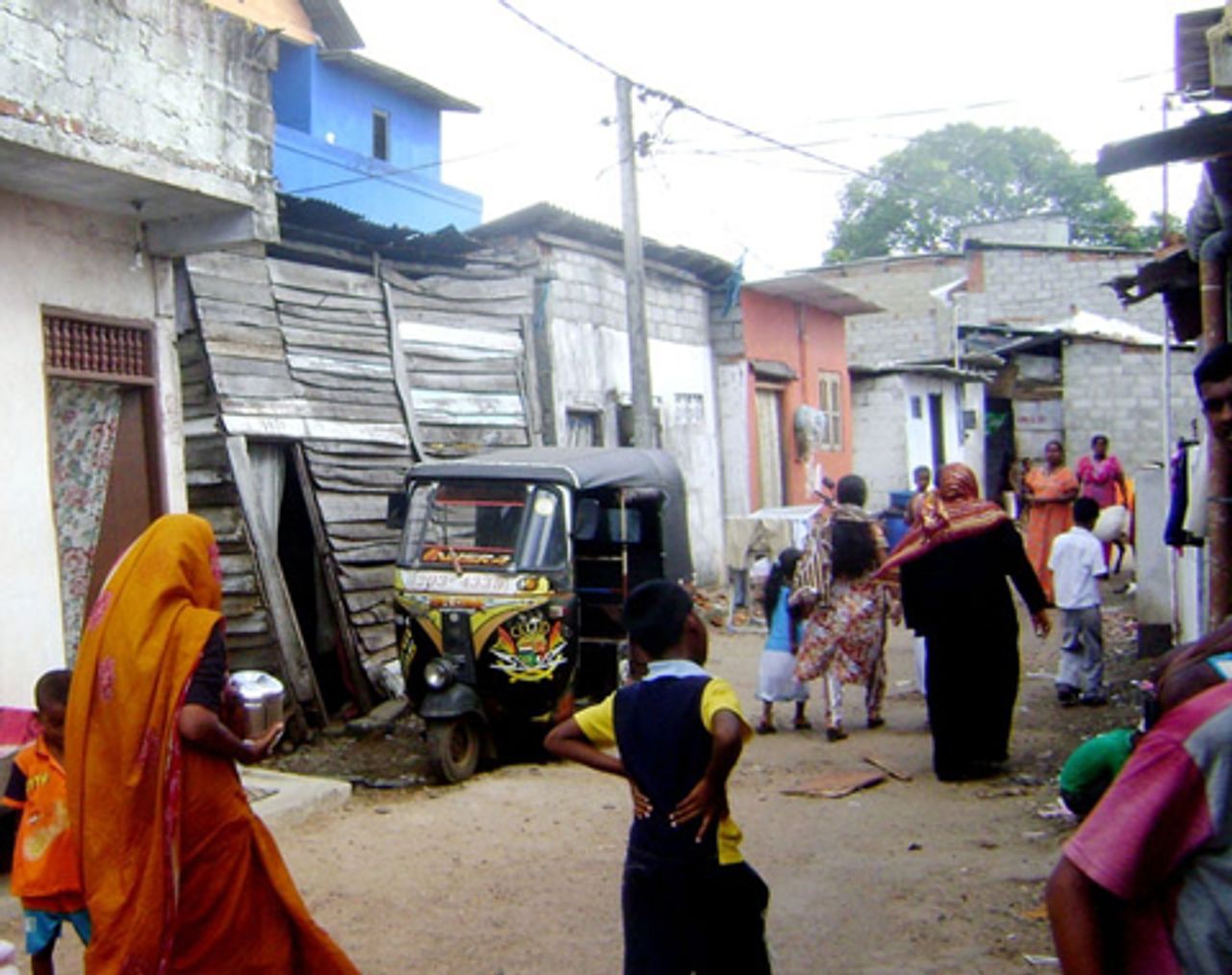The Sri Lankan government is moving to speed up the military-supervised eviction of thousands of poor families who live in Colombo’s slums. On June 28, divisional secretariats were ordered to provide details of “unauthorised” structures within two weeks.
The orders came from the defence ministry, which directed the Urban Development Authority (UDA) and the Reclamation and Land Development Co-operation (RLDC) to conduct a survey of all shanties and huts on government land, reservations and waterways.
In May, President Mahinda Rajapakse placed the UDA and the RLDA under the command of the defence ministry as part of the City of Colombo Development Plan to attract investors and tourists. The plan was initially drawn up in 1999 and re-announced in 2008, but shelved because of the opposition of shanty dwellers, who make up nearly half the city’s population.
Having won the protracted communal war against the separatist Liberation Tigers of Tamil Eelam (LTTE) in May 2009, Rajapakse declared an “economic war” to “rebuild the nation”. The Colombo plan is part of this “economic war”.
 Fetid canal in Apple Watta slum
Fetid canal in Apple Watta slumIn early May, the defence ministry deployed hundreds of police and soldiers to remove 45 families from Mew Street on Slave Island in central Colombo. Officials handed date-stamped token cards to another 50 families from Stadium Village in central Colombo. The families fear that they will be evicted on those dates.
On June 7, nearly 200 families living in 60 houses on the bank of small canal running through Apple Watta in central Colombo were given similar token cards. Officials said they would return in a month.
On June 25, UDA authorities, accompanied by about 100 armed police, demolished a Calvary Christian church on the outskirts of Colombo, claiming it was an unauthorised building. In what also amounted to a provocative communal attack, they assaulted the priest and several devotees who opposed the demolition.
WSWS reporters visited Apple Watta, where there are about 1,175 houses, most housing more than one family. Many families have been living in the area for more than 40 years. They are descended from workers who migrated from the south and worked at Colombo harbor and other factories in 1950s and 1960s. Initially there were only a few hundred houses, but as families expanded, the numbers increased.
Most of the houses have been built with wood planks and roofed with tin sheets. Some are built with cement bricks. The houses are packed together, with narrow lanes of half to one metre wide. There is no proper drainage system and the badly silted canal floods every year. During the recent floods in May, houses were submerged for about two weeks.
 Houses ear-marked for demolition
Houses ear-marked for demolitionThese residents have been neglected for decades by successive governments and the relevant authorities, including the UDA and the Colombo Municipal body. Nothing has been done to improve their conditions.
Like other slum dwellers in Colombo, these families earn their livelihoods as street hawkers or by doing odd jobs such as selling vegetables, cooking for small shops, operating three-wheeler taxis, and sewing clothes. Dozens have lost their income as a result of the recent removal of street hawkers from Colombo city.
Pathima, an Apple Watta resident, told the WSWS: “Earlier we were at Gunasinghepura (another area in Colombo). When my son was married the mosque helped us to buy this land for 380,000 rupees ($US3,349). Now we have been here for six years. Five people live in this house, including my son, his wife and two children. What will happen to us if they demolish this?”
Mohideen, a fish vendor who lives with his wife in a small house similar to Pathima’s, said he bought the land for 200,000 rupees and spent more to build the house. He has been there for five years, but has no legal deed, only a letter from the previous owner.
“I sell fish and it is very hard to manage under the present cost of living,” Mohideen said. “I borrow 2,000 rupees daily to buy fish and pay back 2,100 in the evening. The government and the municipal council have done nothing for us. This canal has not been cleaned for years. When rain comes, the houses are filled with water more than two feet high.”
Several families, who earned extra money by working in the Middle East or operating small businesses, have built more permanent structures. Among them was Farina, 60, who worked as a housemaid for 14 years in the Middle East. Now she is living in fear that her house will be demolished. Her three sons do not have permanent jobs, so three families share the house.
She said: “We built this house with the money that I earned from working in the Middle East and from my sons’ small businesses. If the government demolished our house, we could not build a house like this again. They would not pay compensation because they consider this an unauthorised structure.”
Farina, a housewife, commented: “We voted for President Rajapakse, thinking that he would do good for the people. He promised that once the war was over, the people would get relief and the country would develop under him. Now the government is trying to throw us out of our houses. Is this how the government is going to make the country a Wonder Land?”
Kumara, a young man who studied up to advanced level but is still unemployed, explained: “There are hundreds of youth in this area. Some have studied up to advanced level. Others left school after primary classes because of economic hardship. Most of us are doing odd jobs. Some were street hawkers, but since the government removed street vendors, they have no jobs.”
Kumara talked about politicians with disgust. “I’m not interested in politics because politicians are cheating people,” he said, adding that the opposition Janatha Vimukthi Peramuna, a Sinhala chauvinist party, had talked of “building a different political culture” but was “no different from other main two parties”.
“Over the past five years, during election campaigns the government made promises to provide jobs for youth. Before the presidential election, government politicians distributed a form asking people whether they needed a job, a house or a sewing machine. People filled in the forms but they got nothing. It was just an election gimmick.”
